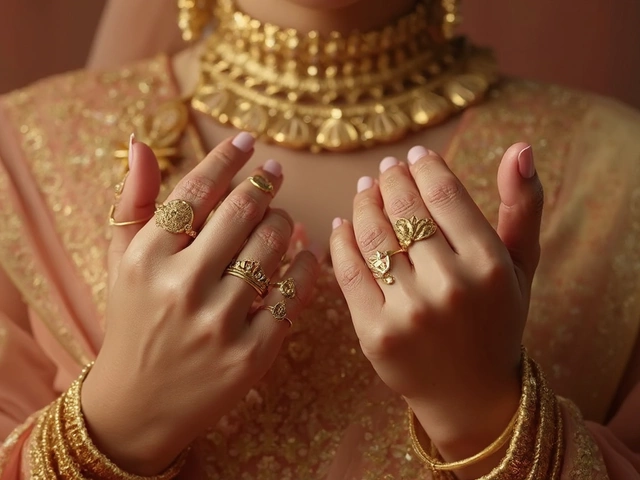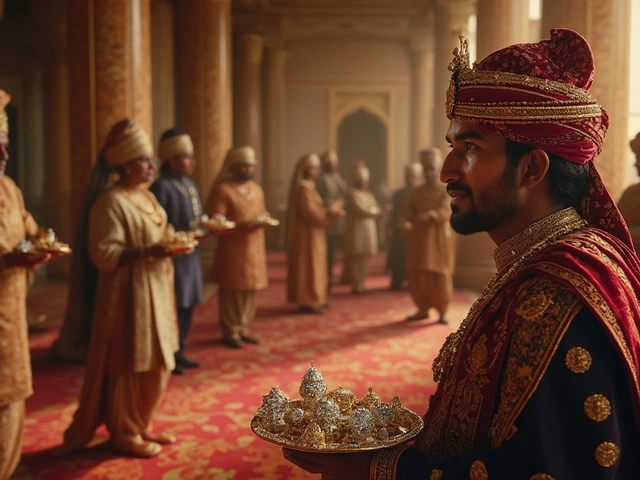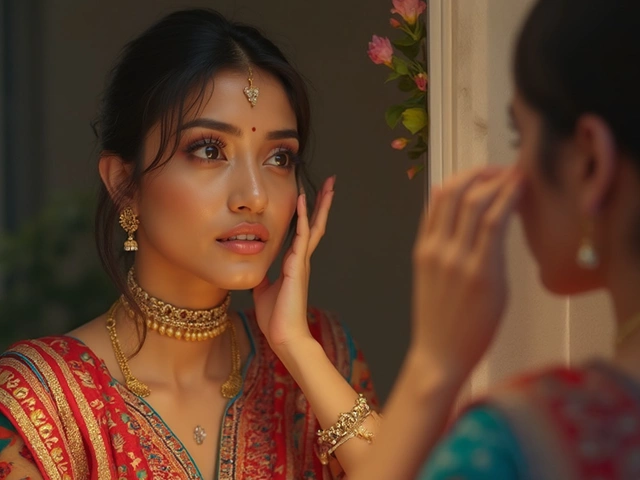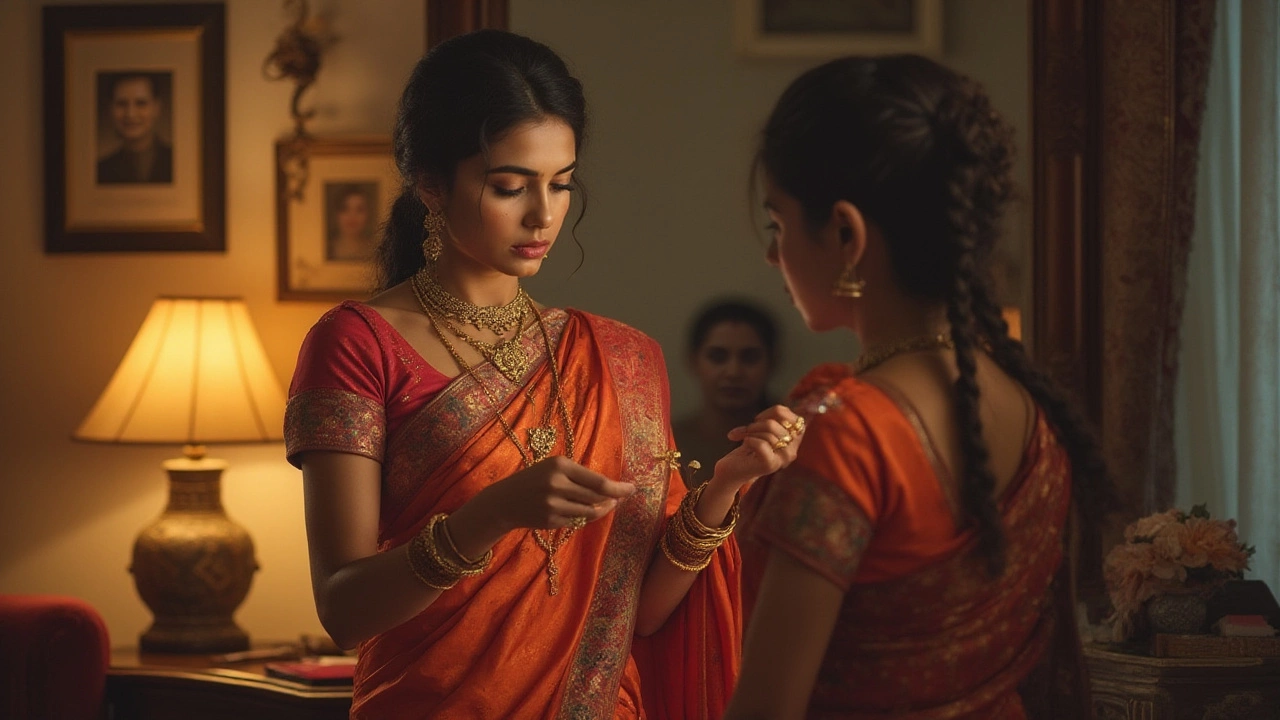
Picture a woman at a family gathering, wearing a striking mangalsutra. Someone whispers, “But she’s divorced.” Instantly, a piece of jewelry becomes a loaded statement, not just an accessory. Yes, the mangalsutra—a necklace tied by the husband around his wife's neck during a Hindu wedding—carries cultural weight, especially in India. It’s meant to symbolize marriage, commitment, and a bond believed to last several lifetimes. But where does that leave divorced women?
This isn’t your usual jewelry conundrum. In fact, the question "Can a divorced woman wear mangalsutra?" hits deep issues about tradition, identity, agency, and social norms. One little chain can trigger gossip, discomfort, or—just maybe—new conversations about choice. The surprising part? The answer isn’t the same everywhere, or for everyone.
The Mangalsutra: More Than a Necklace
For many, the mangalsutra isn’t just a beautiful piece of gold and black beads. It’s woven into the fabric of Indian marital rituals, often placed around the bride’s neck with prayers and blessings. Traditionally, as long as a woman is married, she’s expected to wear the mangalsutra. Remove it, and people assume something has changed—widowhood, divorce, or separation.
The origins of the mangalsutra go back hundreds of years. Ancient Sanskrit texts mention something called “mangalya sutra,” literally the “auspicious thread.” Over time, the beads, designs, and goldwork evolved, with variations across regions. In Maharashtra, women wear a tanmaniya; in Tamil Nadu, the thaali or thirumangalyam. Yet the purpose remains unmistakable: declaring a woman’s married status to society.
The rules are unwritten, but powerful. In many families, the mangalsutra is said to protect the husband’s life, and its removal is seen as inauspicious or unlucky. You’ll find countless films, TV serials, and novels where the dramatic act of removing the mangalsutra means heartbreak, separation, or a new direction in life. If you walk into a traditional jewelry store, you’ll even see mangalsutra designs categorized by religion, region, and family customs.
But times have changed. Working women today might store their mangalsutras for safekeeping or wear them only during festivals. Some add diamonds or extra gold beads, blending tradition with fashion. Others wear simple, understated designs. Layered among other pendants, the mangalsutra can morph into a personalized style statement. Yet the meaning—married woman, taken, off-limits—lingers in the background, deciding who gets to wear it and when.
Divorce, Social Pressure, and Emotional Realities
So what actually happens when a marriage ends? In most Indian families, as soon as divorce proceedings begin, relatives pressure women to remove “symbols of marriage”: the mangalsutra, sindoor (vermilion), bangles, and toe rings. Socially, it signals that a woman is no longer married—case closed. There’s judgement if she keeps wearing it, because the jewelry now looks like she’s holding onto a former relationship.
For a lot of divorced women, this moment hits hard. The mangalsutra isn’t just a fashion accessory. It’s often linked to emotional memories—first days of marriage, ceremonies, smiles, and even the highs and lows of daily life. Removing it can feel like closing a chapter. Still, the pressure is real. Some women say they get stares at work, comments from neighbors, or direct questions: "Why are you still wearing that?" or “Aren’t you divorced now?” People assume a woman can only wear a mangalsutra if she’s married, and that breaking this rule means she refuses to move on.
But this viewpoint isn’t universal. While some see the mangalsutra as sacred and untouchable post-divorce, others believe it’s a personal right—nobody else’s business. In cities, especially among young professionals and those in cosmopolitan spaces, there’s more flexibility. Some wear the mangalsutra for style or nostalgia. Others keep it tucked away, not wanting to field endless explanations. A handful of women reclaim the mangalsutra as a piece of personal history, keeping it as a reminder of their own journey, without tying it to their marital status.
The courts don’t care—there’s no law stopping a divorced woman from wearing a mangalsutra. The Indian legal system stays out of these traditions. But family and community pressure remains strong. In a 2022 survey by a Mumbai-based counseling group, over 70% of divorced women said they felt social pressure to remove their mangalsutra. Most described the moment as awkward or even painful.
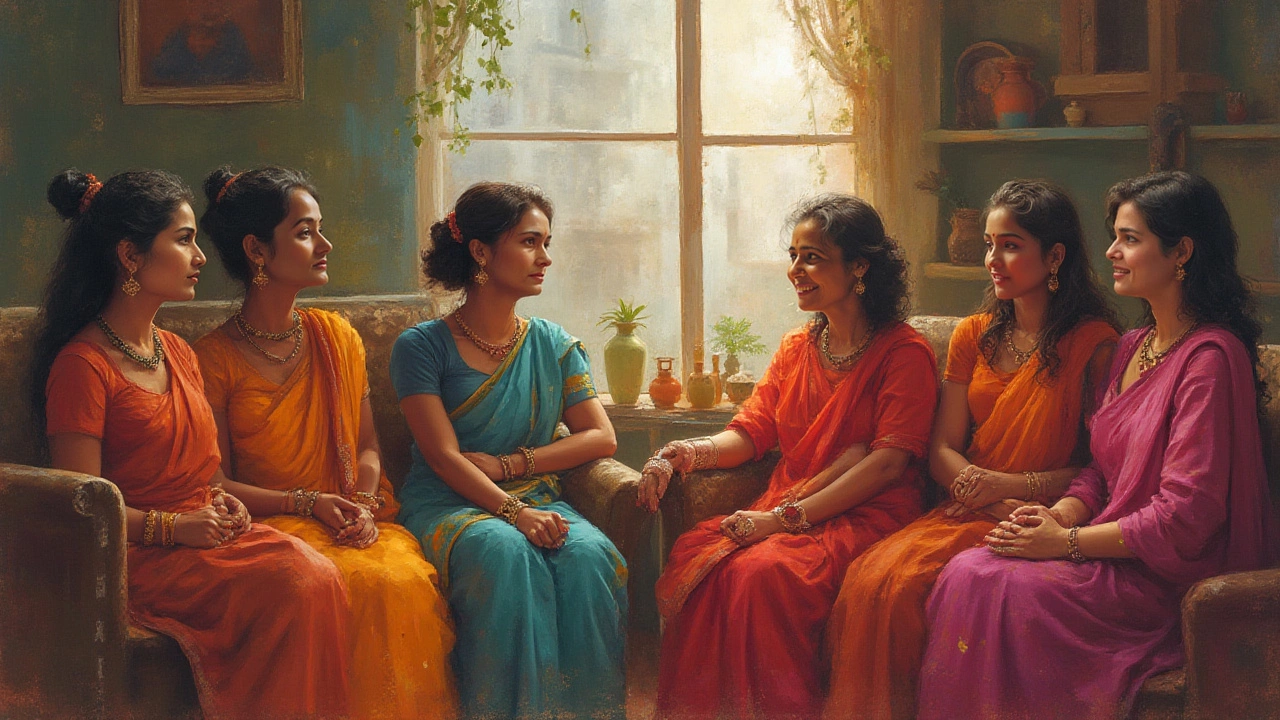
Cultural Shifts: Modernity, Choice, and the Meaning of Symbols
While some see tradition as set in stone, the reality is less rigid. India today is a patchwork of beliefs and cultures, and the meaning of mangalsutra reflects this. Some see it as a must-have, while others view it as optional—like a wedding ring in the West, which not everyone chooses to wear post-divorce either.
Jewelry designers have noticed the change. New mangalsutra designs ditch religious motifs, focusing instead on minimalism, art, or even initials. In urban India, women often mix the mangalsutra with casual office outfits or gym wear, blending tradition with daily life. The social media age—where Instagram and Facebook photos reach wide audiences—has added another twist. Influencers and celebrities post photos wearing their mangalsutras in unusual ways, sparking debate about when and why to wear the piece.
Bollywood, of course, has added fuel. Actress Malaika Arora kept her mangalsutra for a while after her divorce from Arbaaz Khan, saying she felt no rush to part with it. On the other hand, some women publicly remove it and share the act online as part of a larger personal statement. The symbolic meaning—what the mangalsutra says about the wearer—shifts with generation, region, family, and even mood.
The most striking fact? There is no “rulebook.” Sure, relatives and neighbors have opinions, but there’s no scripture commanding a woman to remove her mangalsutra after divorce. The tradition is mostly enforced by social pressure, old habits, and stories passed down through generations. In multicultural India, every community and family might see the mangalsutra its own way. In some parts of South India, for instance, the thaali is believed to contain the “life” of the marriage. Elsewhere, it’s treated more casually—sometimes even as an heirloom, passed through generations regardless of marital status.
And here’s an intriguing data point: According to a 2023 report from India’s National Jewelry Council, urban jewelry stores saw a 15% uptick in women buying mangalsutras for themselves—with nearly half of these buyers divorced or separated. Some simply liked the style, others wanted a keepsake.
| Year | Women Buying Mangalsutra for Themselves (%) | Divorced/Separated Buyers (%) |
|---|---|---|
| 2020 | 22% | 16% |
| 2021 | 27% | 19% |
| 2022 | 29% | 22% |
| 2023 | 35% | 47% |
This shift is clear evidence: more women feel empowered to define what the mangalsutra means for them, with or without a husband. At the end of the day, the symbolism is up for grabs.
Practical Tips for Divorced Women Navigating Mangalsutra Choices
If you’re divorced and wondering what to do with your mangalsutra, you’ve got more options than you might think. Here are some practical tips, based on input from counselors, stylists, and women who’ve made these choices themselves:
- Listen to Yourself First: Forget the noise around you. If the mangalsutra brings you comfort or helps you process your emotions, keep it. If it feels heavy or brings back bad memories, don’t feel guilty about putting it away.
- Style It Your Way: Plenty of women turn their mangalsutra into a bracelet or keep it with other mementos. Some redesign the necklace into something new—a pendant, a ring, or even earrings. Jewelers can transform traditional pieces without erasing their history.
- Set Boundaries: If you’re tired of fielding questions, find a script that works for you: “It’s my jewelry, my choice,” or “I like the design.” No one has the right to interrogate you about your personal symbols.
- Family Talks: In tighter-knit families where everyone knows everything, a conversation with loved ones can help soften reactions. Explain what the mangalsutra means for you, and why you want to keep or remove it.
- Therapy Helps: For some, therapy sessions help deal with the emotional baggage connected to old rituals. Counselors can suggest concrete actions to ease transitions during and after divorce.
- Donate or Pass On: Still undecided? Some women choose to donate the mangalsutra or pass it on to their daughters or nieces as an heirloom, keeping the narrative alive but letting go of daily attachment.
- Legal Angle: Rest easy knowing you’re not breaking any law. The mangalsutra is a personal item, and Indian law recognizes that jewelry given during marriage belongs to the wife.
Here’s the honest truth: Wearing a mangalsutra after divorce is nobody’s business but yours. Whether you keep it, transform it, or remove it, each action sends a message about your values and journey. Just ask yourself what feels right. The world will adapt—eventually.
